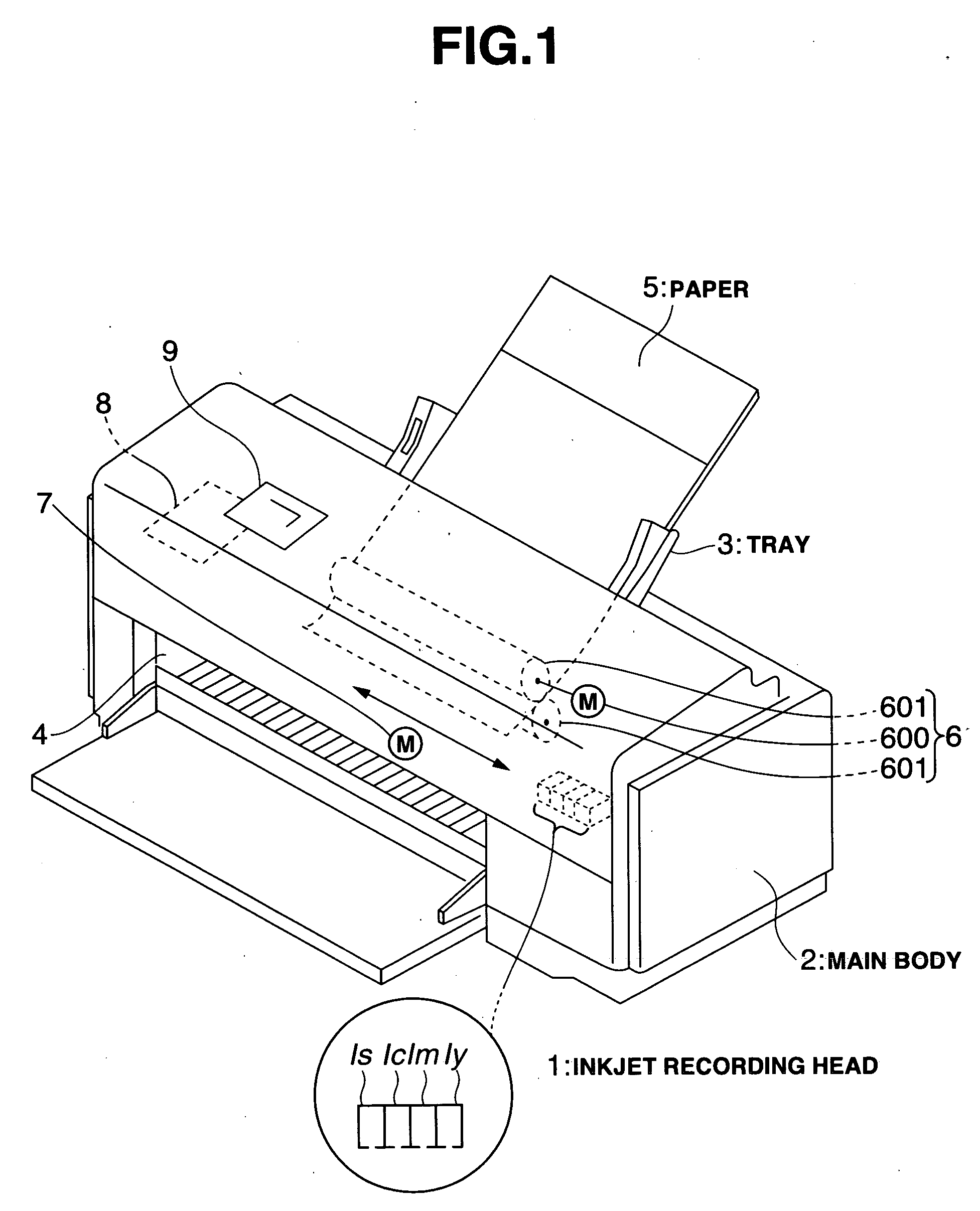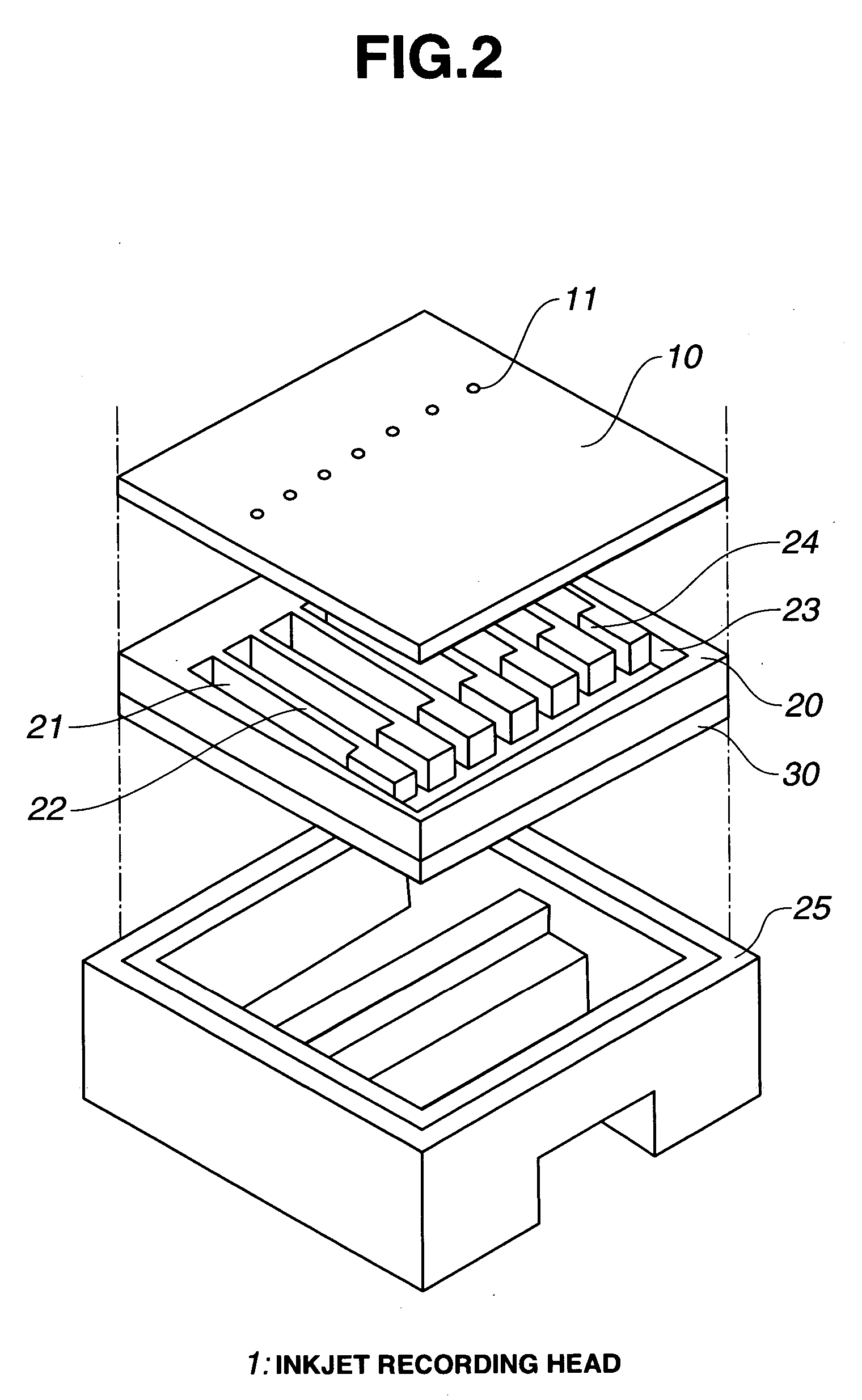Liquid ejection head
a technology of liquid ejection and ejection head, which is applied in the direction of piezoelectric/electrostrictive/magnetostrictive devices, printing, electrical apparatus, etc., can solve the problems of increasing the internal stress of the diaphragm and piezoelectric film, and the inability to achieve sufficient displacement when a driving voltage is applied
- Summary
- Abstract
- Description
- Claims
- Application Information
AI Technical Summary
Benefits of technology
Problems solved by technology
Method used
Image
Examples
example 1
6. EXAMPLE 1
[0077] The inkjet recording head of the embodiment described above was manufactured with varying degrees of (100) face orientation of the PZT which serves as the piezoelectric thin film. By adjusting the thickness of the Ti core formed on the bottom electrode, inkjet recording heads with 8%, 33%, and 79% degrees of PZT (100) face orientation respectively were obtained. In each head, the cavity width W was set at 65 μm.
[0078] For each of these inkjet recording heads, measurements of the bending S of the diaphragm directly after manufacture (initial bending), and the bending S of the diaphragm when the applied voltage was set at zero following the application of one hundred million pulses of a 20V trapezoidal wave (post-driving bending) were taken.
[0079] In the head having an 8% (100) face orientation, the initial bending S was 230 nm, and the post-driving bending S was 280 nm. In the head having a 33% (100) face orientation, the initial bending S was 130 nm, and the pos...
example 2
7. EXAMPLE 2
[0081] A measurement of the bending S in the inkjet recording head of the embodiment described above using multi-component PZT as the piezoelectric thin film was taken. More specifically, an inkjet recording head with the piezoelectric thin film 43 constituted by lead zirconate lead titanate lead nickel niobate lead zirconate niobate, which is expressed as 0.47 PbZrO3−0.43 PbTiO3−0.05Pb (Ni1 / 3Nb2 / 3)O3−0.05 Pb (Zr1 / 3Nb2 / 3)O3, was used. As in Example 1, the cavity width W was set at 65 μm. The initial bending S was 176 nm, and the post-driving bending S was 187 nm, and hence in both cases, the bending S was no more than 0.4% of the cavity width W.
PUM
 Login to View More
Login to View More Abstract
Description
Claims
Application Information
 Login to View More
Login to View More - R&D
- Intellectual Property
- Life Sciences
- Materials
- Tech Scout
- Unparalleled Data Quality
- Higher Quality Content
- 60% Fewer Hallucinations
Browse by: Latest US Patents, China's latest patents, Technical Efficacy Thesaurus, Application Domain, Technology Topic, Popular Technical Reports.
© 2025 PatSnap. All rights reserved.Legal|Privacy policy|Modern Slavery Act Transparency Statement|Sitemap|About US| Contact US: help@patsnap.com



